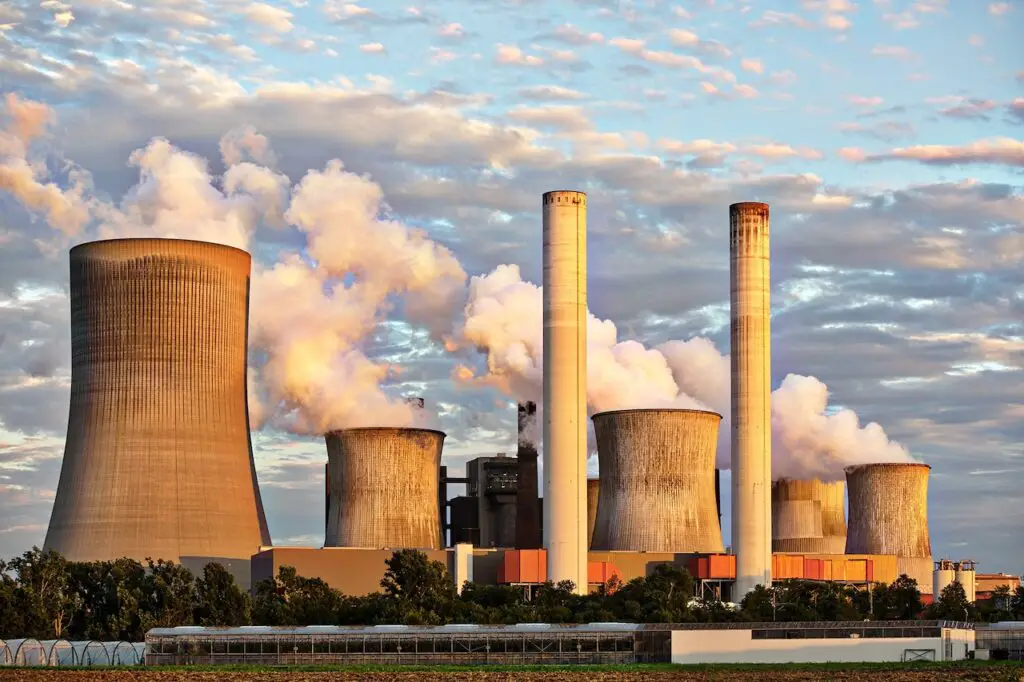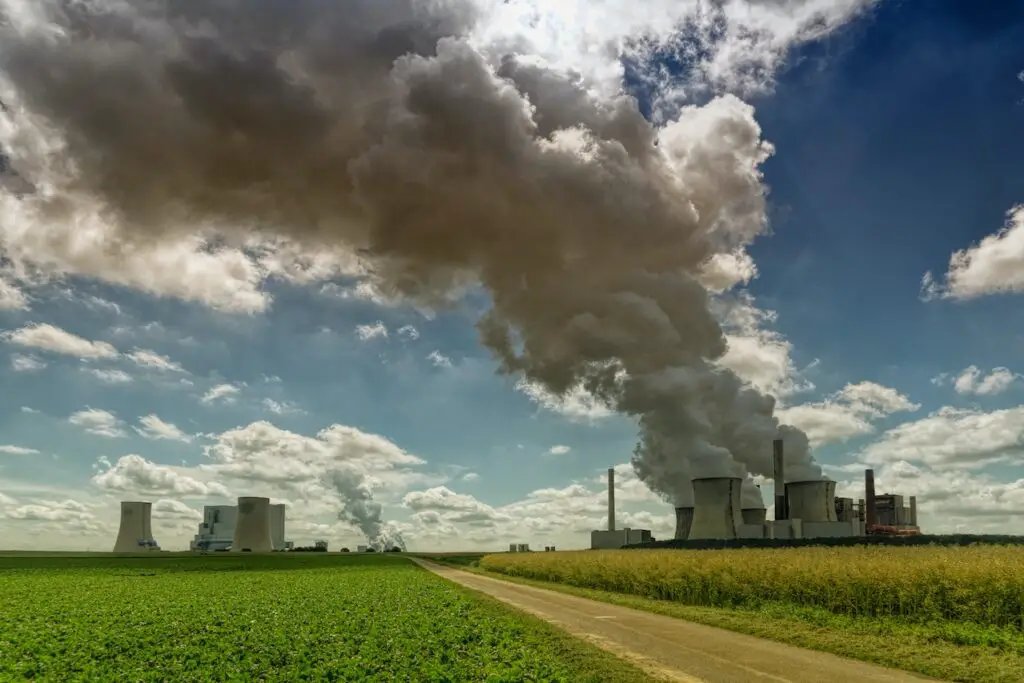Greenhouse gases (GHGs) are gases that trap heat in the Earth’s atmosphere, contributing to climate change. They include carbon dioxide (CO2), methane (CH4), nitrous oxide (N2O), and fluorinated gases. GHG emissions are the release of these gases into the atmosphere, primarily through human activities such as burning fossil fuels, deforestation, and agriculture.
GHG emissions have been increasing since the Industrial Revolution, and their impact on the Earth’s climate has become a major concern. The Intergovernmental Panel on Climate Change (IPCC) has warned that if GHG emissions continue to rise, the Earth’s temperature could increase by more than 1.5 degrees Celsius, leading to more frequent and severe weather events and other environmental disasters.
Understanding GHG emissions and their impact on the environment is crucial for mitigating climate change. This article will explore what GHG emissions are, how they are produced, and their effects on the environment. It will also discuss the ways in which individuals and organizations can reduce their GHG emissions and contribute to a more sustainable future.

What Are GHG Emissions?
Greenhouse gas (GHG) emissions are gases that trap heat in the Earth’s atmosphere, contributing to climate change. These gases include carbon dioxide (CO2), methane (CH4), nitrous oxide (N2O), and fluorinated gases. GHG emissions are released from both natural and human sources.
Definition
GHG emissions are defined as gases that trap heat in the Earth’s atmosphere, contributing to the greenhouse effect. The greenhouse effect is a natural process that keeps the Earth’s temperature within a range that is habitable for humans and other living organisms. However, human activities, such as burning fossil fuels, deforestation, and agriculture, have increased the concentration of GHG emissions in the atmosphere, leading to higher temperatures and climate change.
Sources
GHG emissions come from both natural and human sources. Natural sources include volcanic eruptions, wildfires, and decomposition of organic matter. Human sources include burning fossil fuels for energy, transportation, and industrial processes, as well as deforestation, agriculture, and waste management.
- Carbon dioxide (CO2) is the most common GHG emission, accounting for about 80% of all emissions. It is released from burning fossil fuels, such as coal, oil, and gas, as well as from deforestation and land-use changes.
- Methane (CH4) is the second most common GHG emission, accounting for about 16% of all emissions. It is released from natural gas and oil production, livestock and other agricultural practices, and landfills.
- Nitrous oxide (N2O) is a less common GHG emission, accounting for about 6% of all emissions. It is released from agricultural and industrial activities, as well as from burning fossil fuels.
Impact on Climate Change
GHG emissions have a significant impact on climate change, leading to rising temperatures and changes in weather patterns. The Intergovernmental Panel on Climate Change (IPCC) has stated that the Earth’s temperature has already increased by 1°C above pre-industrial levels, and is likely to increase by another 0.5°C to 1.5°C in the next few decades.
Climate change has a range of impacts, including rising sea levels, more frequent and severe weather events, and changes in ecosystems and agricultural productivity. These impacts can have significant social, economic, and environmental consequences, affecting everything from human health and wellbeing to global food security and economic stability.
Types of GHG Emissions
Carbon Dioxide (CO2)
Carbon dioxide is the most prevalent greenhouse gas emitted by human activities. It is released into the atmosphere through the burning of fossil fuels such as coal, oil, and gas. Deforestation and land-use changes also contribute to increased CO2 emissions. According to the US Environmental Protection Agency, CO2 accounted for approximately 80% of all US greenhouse gas emissions in 2020.
Methane (CH4)
Methane is another potent greenhouse gas that is emitted by human activities. It is released during the production and transport of coal, oil, and gas. Methane is also produced by livestock during digestion and manure decomposition. Landfills and wastewater treatment plants are also significant sources of methane emissions. Although methane emissions are lower than CO2 emissions, methane is a more potent greenhouse gas, trapping 28 times more heat over a 100-year period.
Nitrous Oxide (N2O)
Nitrous oxide is a potent greenhouse gas that is emitted by human activities such as agriculture, fossil fuel combustion, and industrial processes. Nitrous oxide is also produced naturally by soil bacteria and during lightning strikes. Although nitrous oxide accounts for a small percentage of total greenhouse gas emissions, it is a potent greenhouse gas, trapping 265 times more heat over a 100-year period than carbon dioxide.
Fluorinated Gases
Fluorinated gases, also known as F-gases, are synthetic gases that are used in a variety of industrial applications such as refrigeration, air conditioning, and electrical equipment. These gases are extremely potent greenhouse gases, trapping thousands of times more heat than carbon dioxide. Although they account for a small percentage of total greenhouse gas emissions, their impact on climate change is significant.
Measuring GHG Emissions
Measuring greenhouse gas emissions is essential for organizations to understand their carbon footprint and take steps to reduce their impact on the environment. There are various methods to measure GHG emissions, including the Greenhouse Gas Protocol and calculating carbon footprint.
Greenhouse Gas Protocol
The Greenhouse Gas Protocol is a widely used tool for measuring and managing GHG emissions. It provides guidelines for companies to measure and report their emissions in a standardized way, making it easier to compare emissions across different companies and industries. The protocol covers three scopes of emissions:
- Scope 1: Direct emissions from owned or controlled sources, such as emissions from company-owned vehicles or factories.
- Scope 2: Indirect emissions from the generation of purchased electricity, heat, or steam.
- Scope 3: Other indirect emissions, such as emissions from the production of purchased materials or the transportation of goods.
Carbon Footprint
Carbon footprint is another method to measure GHG emissions. It is a measure of the total amount of GHG emissions caused by an individual, organization, event, or product. Carbon footprint can be calculated using the Greenhouse Gas Protocol or other tools, and it includes all three scopes of emissions. The carbon footprint of an organization can be used to identify areas where emissions can be reduced and to set targets for emissions reduction.
In conclusion, measuring GHG emissions is crucial for organizations to understand their carbon footprint and take steps to reduce their impact on the environment. The Greenhouse Gas Protocol and carbon footprint are two widely used methods for measuring emissions, and they can help companies identify areas for improvement and set targets for emissions reduction.
Reducing GHG Emissions
Reducing greenhouse gas (GHG) emissions is critical to mitigating climate change. There are several ways to reduce GHG emissions, including:
Renewable Energy
Renewable energy sources such as solar, wind, and hydropower generate electricity with little to no GHG emissions. The use of renewable energy can significantly reduce GHG emissions from the energy sector. According to the United Nations, shifting to renewable energy is an important element in reducing GHG emissions.
Energy Efficiency
Energy efficiency measures can help reduce the amount of energy needed to power homes, buildings, and industries. This can be achieved through the use of energy-efficient appliances, insulation, and lighting. According to the US Environmental Protection Agency, many strategies for reducing GHG emissions from energy are cross-cutting and apply to homes, businesses, industry, and transportation.
Carbon Capture and Storage
Carbon capture and storage (CCS) is a technology that captures carbon dioxide emissions from power plants and industrial processes and stores them underground. According to the Harvard Business Review, CCS can help reduce GHG emissions from the energy and industrial sectors.




